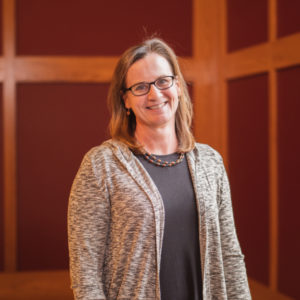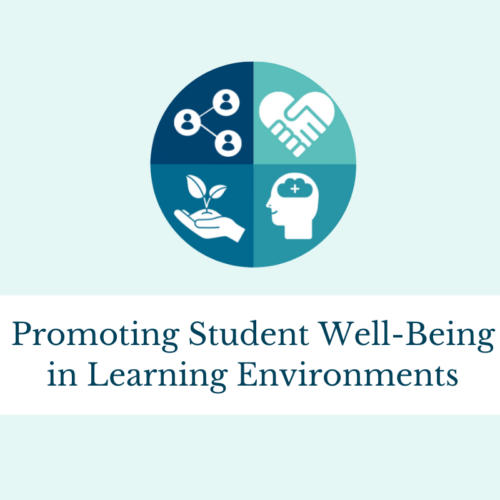Environmental Studies Professor Highlights Real-World Experience in Learning
 “As instructors, we have responsibility to help students learn content, but if we can do that at the same time as providing resources to our community, it’s all the better,” said Beth Martin, Senior Lecturer in Environmental Studies at Washington University in St. Louis and Interim Director of the Washington University Climate Change Program. Professor Martin teaches a variety of courses including a first-year seminar focusing on the environment in St. Louis and a senior-level seminar that prepares students to attend the international climate negotiations.
“As instructors, we have responsibility to help students learn content, but if we can do that at the same time as providing resources to our community, it’s all the better,” said Beth Martin, Senior Lecturer in Environmental Studies at Washington University in St. Louis and Interim Director of the Washington University Climate Change Program. Professor Martin teaches a variety of courses including a first-year seminar focusing on the environment in St. Louis and a senior-level seminar that prepares students to attend the international climate negotiations.
In 2019, Professor Martin was a recipient of the Emerson Excellence in Teaching Award, which recognizes educators for their leadership in and passion for teaching, their contributions to student learning, and their knowledge and creativity.
Professor Martin earned a B.S. in mathematics from Birmingham-Southern College, and a B.S. in Civil Engineering from Washington University in St. Louis. She earned a M.S. in environmental engineering from Washington University in St. Louis.
After working in environmental consulting, Professor Martin accepted a position as Engineering and Science Director of the Interdisciplinary Environmental Clinic at Washington University in St. Louis School of Law. She was a lecturer in law before transitioning to her current role in the environmental studies program at the university.
In an interview with The Center for Teaching and Learning, Professor Martin discussed how community-engaged teaching can prepare students for challenges they may encounter after college.
How did you become interested in environmental studies?
I’ve always loved being outside. I enjoy hiking and camping, and I also enjoy people. I was a camp counselor for many years, which matched those interests. I am good at math and science, which led me to engineering. In engineering, the area I thought you could do the most beneficial work was the environmental side.
What was your path to becoming an instructor?
When I finished school, I went into consulting for a company that cleaned up hazardous waste sites. My job required lots of time working with the public and figuring out how to share information so that they knew what was going on. I recognized pretty quickly that if communities didn’t understand what was going on or wanted to engage, there were often lawyers to help them, but not always scientists or engineers. As an example, we were working on a side in a city park in the Chicago area with houses on three sides. We found source material, similar to roofing tar, within six inches of the surface of the playground. To minimize potential exposure the city closed the park while we finished our investigation and cleanup. Navigate park closed was concerning and unsettling for its neighbors. I saw the need for communities to have someone to turn to in these situations to understand the challenges and options.
Maxine Lipeles (Senior Lecturer in Law Emeritus at Washington University in St. Louis School of Law) one of my college professors, started the Interdisciplinary Environmental Clinic at WashU Law at about the same time. It’s a typical legal clinic where lawyers can practice law on behalf of clients with faculty supervision, but what makes it different is that it also offers technical and scientific support – exactly what I had seen was missing for communities in my work. I soon joined her at the clinic as the Engineering and Science Director.
It was practice like I’d been doing, but also teaching in an engaged learning capacity with students doing professional work for clients. We had, and the clinic still has, a wide range of cases from water or air pollution to hazardous waste to lead contamination, environmental justice and more. We worked with the students to help create an appropriate legal strategy and an appropriate scientific strategy. For example, our science and engineering students evaluated the science behind the current (at the time) national ambient air quality standard for lead. Based on our finding that it was not based on current scientific information and not protective, and that EPA had failed in their obligation to review the standard, the clinic filed a lawsuit against the EPA for failing to review the natural ambient air quality standard for lead. The end result was that the standard was reviewed and reduced by a factor of 10.
How did your teaching progress after you started working at the clinic?
My experiences in private practice and in the clinic, led me to develop other courses. I teach an environmental studies writing intensive that helps students develop writing and communication skills that will be critical when they leave the university. I also teach a class on collaborative problem solving, which is mostly engineering and some environmental studies students. In problem-solving, we explore how you think about and make progress on large scale environmental problems with multiple stakeholders and multiple interests. I teach a freshman seminar, an introduction to the environment in St. Louis.
Another part of my teaching is the International Climate Negotiation Seminar. This interdisciplinary course explores the intersection of science and engineering, law and policy, and how climate and disciplines fit within that. When I review student applications for the course, I try to build as interdisciplinary of a delegation as possible. This past year I had graduate and undergraduate students from business, law and arts and sciences. In the past I have also had students from engineering. Having this variety of perspectives and knowledge enhances our class time and is invaluable when the students travel to observe the negotiations.
Why is community-engaged teaching important?
When you’re teaching in an engaged way, you’re teaching students both content and skills that are valuable when they leave the university. As instructors, we have responsibility to help students learn content, but if we can do that at the same time as providing resources to someone in our community and enabling our students to see how their work can have application and meaning, it’s all the better.
What are some of your main goals as an instructor related to student learning?
I want my students to be able to undertake any job or challenge they have in front of them in the future. I want them to be able to see the big picture and decide where they need to dig in. I want them to have the skills that they need to succeed. I want them to be good writers and problem solvers. I want them to be open to the thoughts and views of others, particularly when they’re looking at environmental situations. I want them to see the connections between what they do and the larger world. Most of all I want them to be happy and well balanced.
What do you hope to see in students by the time they graduate?
An appreciation for ambiguity and how to navigate through. In the climate negotiations world for example, the field is changing every day. You’re learning from every negotiation and meeting. What you see and hear is not often clear or consistent. I’m just a step ahead of my students, and sometimes by the end of the class, they’re a step ahead of me. That can be uncomfortable for them.
What is a challenge you’ve encountered while teaching, and how did you address it?
I think the biggest challenges I have seen with my students lately is when they have something going on outside of class that is impacting their ability to learn. It’s important to connect with the student through that time, making sure they have support they need so that they can continue to be successful in class and in life.
What resources would you recommend to colleagues for teaching?
Dee Fink’s “Creating Significant Learning Experiences.” Eleanor Pardini (Assistant Director of Environmental Studies, Research Scientist and Lecturer, Environmental Biology Advisor at Washington University in St. Louis) introduced me to it. When I’m developing a new course or I go back and look at a course, it helps me re-center my course goals. It’s a good tool as an instructor to link goals, activities, and assessments.
There’s also an online resource, “Self-Directed Guide for Designing Courses for Significant Learning,” that you can download for free. It’s a good thing to go back to.
Who are some of your favorite teachers, and why?
Dr. Sandra Sprayberry (Robert E. Luckie, Jr., Professor of English at Birmingham-Southern College), a creative writing professor, taught me that writing didn’t have to be the standard five paragraphs with an intro and conclusion; it could take many different forms. That’s part of what I teach in my environmental writing class. Writing can take so many different forms and it rarely looks like the classic five paragraph essay.
Dr. Jay Turner (Vice Dean for Education & Professor of Energy, Environmental & Chemical Engineering at McKelvey School of Engineering at Washington University in St. Louis) was a doctoral student when I was getting my engineering degree at WashU. His passion for what he was teaching made you want to continue to take his classes even though they were hard.
What advice do you have for aspiring educators?
Listen to your students. They will teach you in many ways as much as you teach them.



